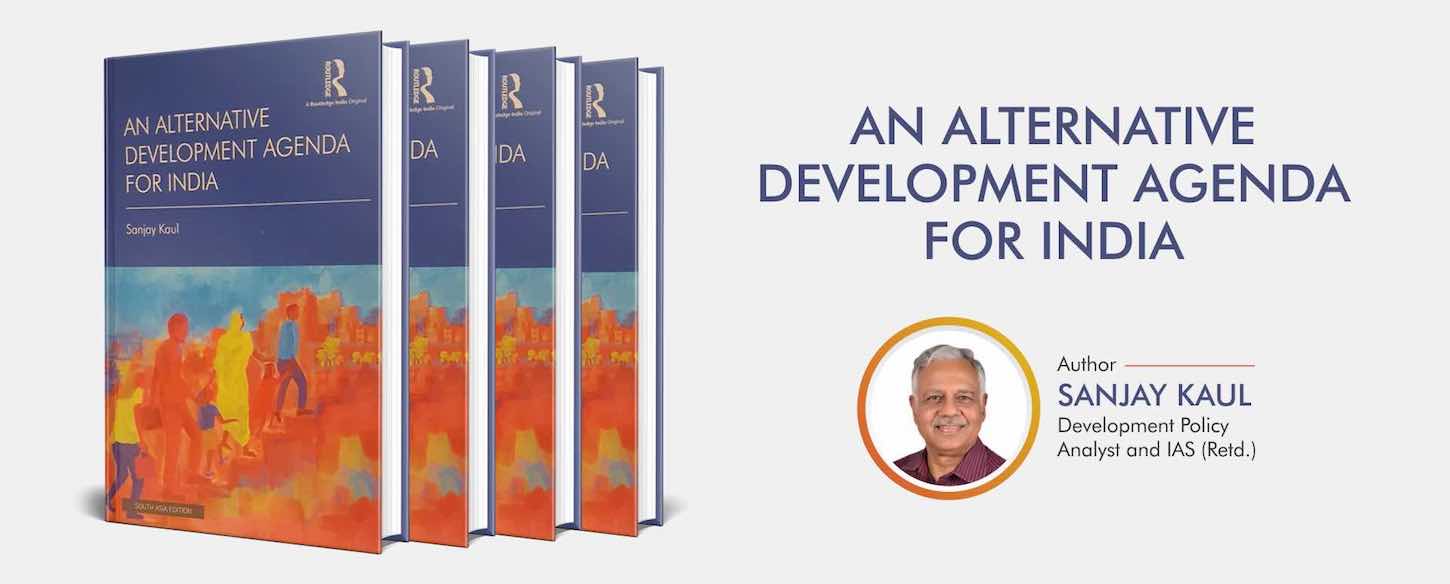
India's national development journey has been marked by various accomplishments and challenges. While the country has made significant progress in certain sectors, it continues to grapple with pitfalls that hinder its overall growth and the improvement of people's livelihoods. In this context, adopting a holistic approach becomes imperative—a strategy that takes into account the interconnectedness of various aspects of development and aims to address the multifarious needs of the population. By emphasizing inclusive policies, equitable resource allocation, and comprehensive development plans, such an alternative approach proposed by Sanjay Kaul has the potential to foster sustainable progress and uplift the lives of individuals across the nation. In this article, we will have a glance at the challenges and solutions for more effective employment and development policies.
National development should involve the holistic development of every citizen. In other words, development entails an improvement in the livelihood of the citizen. India’s development is usually anchored to the liberalisation reforms of 1991. However, mere opening up of the market does not bring national development with the societal structures not being calibrated to the open market systems. Government must draft policies such that they bring an inclusive and holistic improvement in the livelihood of the public.
COVID–19 has clearly shown that India does not have a holistic policy that targets the improvement of the livelihood of the impoverished. Poverty, unemployment, a decline in agricultural income and traditional economic activities, lack of facilities for the migrant workforce, and neglect of migrant labour, are some of the main reasons for declining livelihood. A comprehensive set of strategies including the following will provide a foundation for the policy of improving the livelihood of citizens.
1. Supporting impoverished families
Supporting impoverished families should include the extension of PM Samman Kisan Nidhi schemes which provide monetary capital to land-owning farmers. This central scheme is similar to the Rythu Bandhu scheme of the Telangana government. If the scope of this scheme is extended, then it can provide capital or at least savings in the lands of the poor.
2. Improving migrant labour conditions
Improving the migrant labour conditions does not require any innovation. All it needs is an actualisation and effective improvement of the Interstate Migrant Act 1979, and an extension of migrant registration in Employees State Insurance Corporation.
3. Widening agriculture insurance coverage
The central government had promised that they would improve the agriculture income, but the reality is different. The book asserts that having weather-based insurance schemes benefits the farmers more than the existing PM Fasal Bima Yojana. As weather-based insurance considers automated weather data, there is less scope for modifications.
4. Supporting urban labour-intensive enterprises
For the urban areas, some of the measures that can be taken are having a law that mandates paternity leaves, and prohibiting employers to fill the position of women when they are on maternity leave. Encouraging labour-intensive enterprises in urban areas is also another solution to enhance the livelihood of migrants in urban areas. The latter is done by designing industrial clusters in cities and towns. China is a good example of developing industrial clusters. These industrial clusters should be assisted by strong state support for innovation, and investments.
5. Improving women’s labour force participation
As reported by the wire, female labour force participation has become stagnant in India. Overall, female LFPR is lower in South Asia than in other parts of Asia. On average, as per the world bank data, 2022 female LFPR in South Asia is 24.8%; in East Asia and Pacific, it is 44.4%; in Europe and Central Asia is 44.2%; and the global average stands at 39.5%. As per Periodic Labour Force Survey (PLFS) 2021-22, India’s female labour force participation was 32.8%, which is still the lowest among all the regions’ averages and the global average. Female labour force participation is the driver and representative of economic development. In such a scenario, India requires to improve its female workforce.
6. Aiding small businesses
How to improve the female labour force participation ratio and also improve the small businesses in rural areas? In rural spaces, self-help groups play a key role in aiding and sustaining women-led businesses. In addition to the self-regulated credit systems, micro-finance and cooperative banks could design capital investments for women-led businesses in rural areas.
In conclusion, it is worth considering a holistic approach to development, as proposed by Sanjay Kaul. Such an approach takes into account the interconnectedness of various aspects of development and aims to address the multifaceted needs of the population.
To foster sustainable progress and uplift the lives of individuals across the nation, inclusive policies, equitable resource allocation, and comprehensive development plans are essential. This requires a shift from mere market liberalization to a comprehensive strategy that prioritizes the holistic improvement of citizens' livelihoods, where the government takes the burden of improving the legislation, providing micro-capital to the rural areas. By embracing a holistic approach and implementing targeted policies, India can overcome the pitfalls of national development and pave the way for inclusive growth, improved livelihoods, and sustainable progress for its diverse population.
